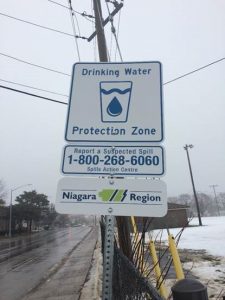Niagara Drinking Water Source Protection
Ensuring safe drinking water is important to the health and well-being of our communities.
We all need and deserve safe drinking water and, in this regard, it is in everyone’s interest to ensure that our drinking water is safe and secure. But what is the best way to keep our water safe now and in the future?
The Clean Water Act received Royal Assent on October 19, 2006. The Act ensures communities are able to protect their municipal drinking water supplies through developing collaborative, locally driven, science-based protection plans. Communities will identify potential risks to local water sources and take action to reduce or eliminate these risks. Municipalities, conservation authorities, property owners, farmers, industry, community groups and the public will all work together to meet common goals.

